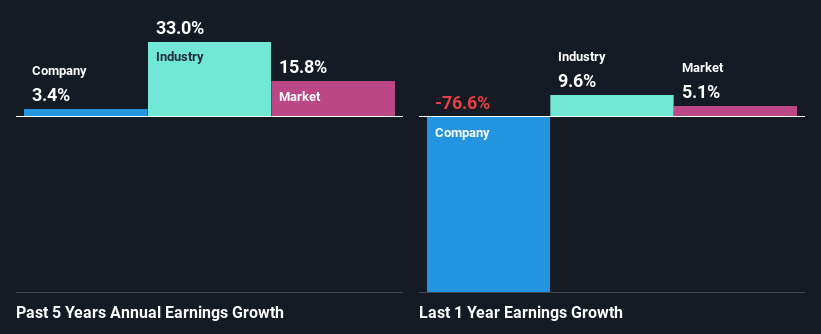Is The Market Rewarding FormFactor, Inc. (NASDAQ:FORM) With A Negative Sentiment As A Result Of Its Mixed Fundamentals?
It is hard to get excited after looking at FormFactor's (NASDAQ:FORM) recent performance, when its stock has declined 5.9% over the past month. It seems that the market might have completely ignored the positive aspects of the company's fundamentals and decided to weigh-in more on the negative aspects. Long-term fundamentals are usually what drive market outcomes, so it's worth paying close attention. In this article, we decided to focus on FormFactor's ROE.
Return on equity or ROE is a key measure used to assess how efficiently a company's management is utilizing the company's capital. Simply put, it is used to assess the profitability of a company in relation to its equity capital.
Check out our latest analysis for FormFactor
How To Calculate Return On Equity?
The formula for return on equity is:
Return on Equity = Net Profit (from continuing operations) ÷ Shareholders' Equity
So, based on the above formula, the ROE for FormFactor is:
2.7% = US$22m ÷ US$824m (Based on the trailing twelve months to April 2023).
The 'return' is the yearly profit. That means that for every $1 worth of shareholders' equity, the company generated $0.03 in profit.
What Is The Relationship Between ROE And Earnings Growth?
So far, we've learned that ROE is a measure of a company's profitability. We now need to evaluate how much profit the company reinvests or "retains" for future growth which then gives us an idea about the growth potential of the company. Generally speaking, other things being equal, firms with a high return on equity and profit retention, have a higher growth rate than firms that don’t share these attributes.
A Side By Side comparison of FormFactor's Earnings Growth And 2.7% ROE
It is hard to argue that FormFactor's ROE is much good in and of itself. Even when compared to the industry average of 16%, the ROE figure is pretty disappointing. Accordingly, FormFactor's low net income growth of 3.4% over the past five years can possibly be explained by the low ROE amongst other factors.
Next, on comparing with the industry net income growth, we found that FormFactor's reported growth was lower than the industry growth of 33% over the last few years, which is not something we like to see.
Earnings growth is an important metric to consider when valuing a stock. What investors need to determine next is if the expected earnings growth, or the lack of it, is already built into the share price. By doing so, they will have an idea if the stock is headed into clear blue waters or if swampy waters await. If you're wondering about FormFactor's's valuation, check out this gauge of its price-to-earnings ratio, as compared to its industry.
Is FormFactor Making Efficient Use Of Its Profits?
FormFactor doesn't pay any dividend, meaning that potentially all of its profits are being reinvested in the business. However, this doesn't explain the low earnings growth the company has seen. Therefore, there might be some other reasons to explain the lack in that respect. For example, the business could be in decline.
Conclusion
On the whole, we feel that the performance shown by FormFactor can be open to many interpretations. Even though it appears to be retaining most of its profits, given the low ROE, investors may not be benefitting from all that reinvestment after all. The low earnings growth suggests our theory correct. Having said that, looking at the current analyst estimates, we found that the company's earnings are expected to gain momentum. To know more about the latest analysts predictions for the company, check out this visualization of analyst forecasts for the company.
Have feedback on this article? Concerned about the content? Get in touch with us directly. Alternatively, email editorial-team (at) simplywallst.com.
This article by Simply Wall St is general in nature. We provide commentary based on historical data and analyst forecasts only using an unbiased methodology and our articles are not intended to be financial advice. It does not constitute a recommendation to buy or sell any stock, and does not take account of your objectives, or your financial situation. We aim to bring you long-term focused analysis driven by fundamental data. Note that our analysis may not factor in the latest price-sensitive company announcements or qualitative material. Simply Wall St has no position in any stocks mentioned.
Join A Paid User Research Session
You’ll receive a US$30 Amazon Gift card for 1 hour of your time while helping us build better investing tools for the individual investors like yourself. Sign up here

